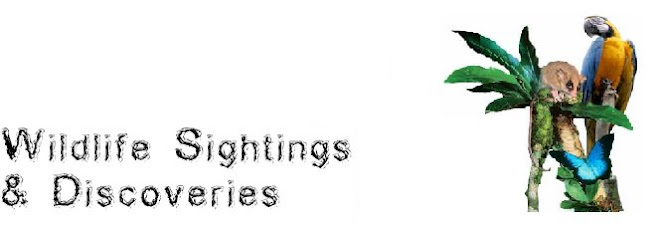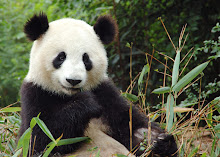
The discovery of a new bird to science in a distant archipelago is providing evidence of how, in the absence of competitors, unique species can evolve rapidly to fill empty niches. But the archipelago is not the Galapagos, and the bird is not one of Darwin's finches.
As we celebrate the 200th anniversary of Darwin's birth, a paper in the leading scientific journal, Ibis, describing a new bird species in the Solomon Islands, has reinforced evidence that white-eyes evolve new species faster than any other known bird family - including Galapagos finches.
The new species has been named Vanikoro White-eye (or Zosterops gibbsi). The formal description was published in Ibis by Dr Guy Dutson of Birds Australia (BirdLife in Australia), who led a recent expedition to the island of Vanikoro to gather evidence about the bird. Its scientific name gibbsi is in honour of the first person to see the species - David Gibbs.
Vanikoro Island - Volcanic forest
The Vanikoro White-eye differs from other family members by having a distinctively shaped bill; along with different leg and eye-ring colours. Vanikoro is a small island in the south-west Pacific, in the Solomon Islands archipelago. The rugged volcanic island with steep, forest-covered hills was visited by Jules D'Urville in 1829 - six years prior to The Beagle landing in the Galapagos - who collected specimens of Vanikoro Flycatcher Myiagra vanikorensis and Uniform Swiftlet Collocalia vanikorensis.
13 species of White-eye in the Philippines
"Genetic research has shown that white-eyes evolve new species faster than any known bird family," said Guy Dutson. "Islands only 3 kilometres apart in the Solomons have their own white-eye species, and the Solomon Islands alone have 13 species of white-eye.
"Like Darwin's finches, these birds have evolved unique beak structures and feeding behaviours in the absence of competitors", Dr Dutson added.
White-eyes are small sociable birds of tropical forests. As their common name implies, many have a conspicuous ring of tiny white feathers around their eyes. The Vanikoro White-eye differs from the geographically closest white-eye, the Santa Cruz White-eye Z. sanctaecrucis, by having a longer bill, and different leg and eye-ring colour.
Habits
Vanikoro White-eyes are found in forest habitats, mostly above 350 m, and feed on insects and small fruits. "Vanikoro White-eyes were abundant towards the summit of the highest mountain", noted Dr Dutson, who observed an active nest during his expedition. "Up to three adults fed chicks at a single nest, suggesting cooperative breeding, which has only been documented in two other white-eye species".
Vanikoro White-eye displays different feeding behaviours to closely-related birds. "This new species forages in a slower, more methodical manner than similar white-eyes, suggesting they have evolved into an empty niche", commented Dr Dutson.
Threats
"Like Galapagos finches, Vanikoro White-eye have evolved perfectly to its surroundings in the absence of competitors", said Dr Nigel Collar, the Leventis Fellow in Conservation Biology at BirdLife International.
"Perhaps the biggest threat to Vanikoro White-eye is introduced alien species such as rats", Dr Nigel Collar warned. "Predators introduced by humans now pose a huge threat to native species across the Pacific."
"Elsewhere in the Solomon Islands, birds are threatened by logging which can extend from the coast high into the hills", added Dr Dutson.
"So little is known about biodiversity in the Solomon Islands", said Don Stewart - Director of BirdLife's Pacific Programme. "Who knows what is still to be found in the Solomon Islands? We need more expeditions like this throughout Melanesia before threats such as illegal logging wipe species out before we can help them".
Dr Guy Dutson
Dr Guy Dutson is a British-born veterinarian, ornithologist and a leader of birding tours, who is a world authority on the birds of the south-west Pacific region. He has rediscovered or described several bird species. Dutson was educated at Cambridge University where he studied veterinary science. In 1990 he led a Cambridge University expedition to the Solomon Islands and Papua New Guinea, in the course of which he rediscovered the Superb Pitta Pitta superba on Manus Island. Further, expeditions to Indonesia and the Philippines led to the rediscovery of the Tanahjampea Monarch and the Cebu Flowerpecker Dicaeum quadricolor. In 2003 he rediscovered the Long-legged Warbler Trichocichla rufa in Fiji.
From 2000 to 2005, based in Fiji, Dutson established and managed the BirdLife International Pacific program, travelling extensively around the islands of Melanesia and the south-west Pacific. He now works for Birds Australia (BirdLife in Australia) as the manager of the Australian Important Bird Areas program. Dutson wrote most of the Pacific Islands species accounts in the BirdLife publication ‘Threatened Birds of the World'. He is also involved in editing the same species for the ‘Handbook of the Birds of the World'.




.jpg)
No comments:
Post a Comment